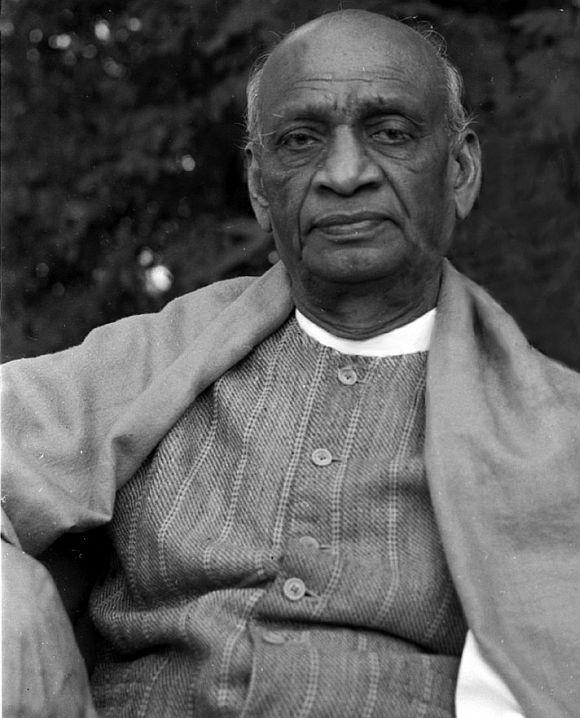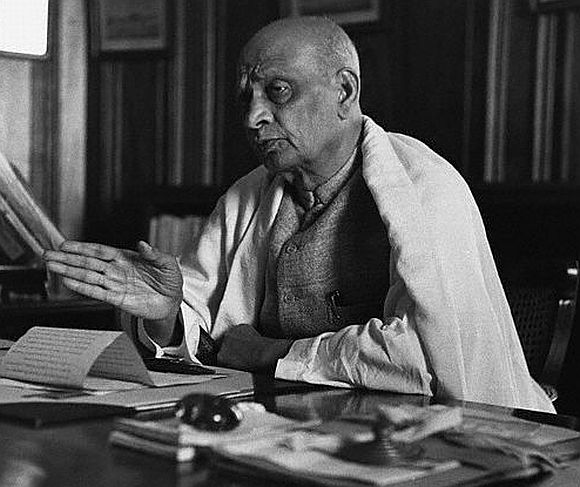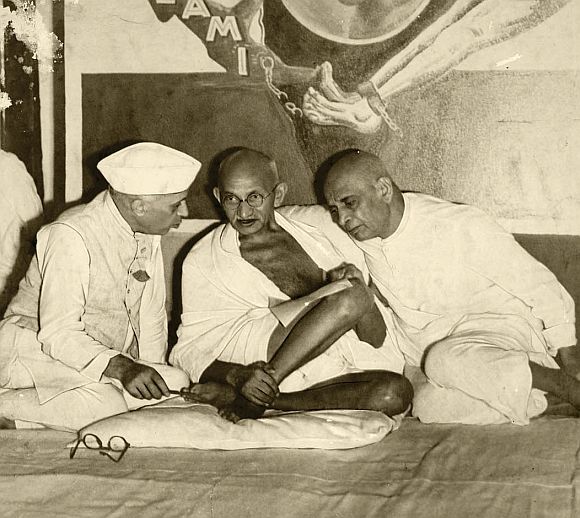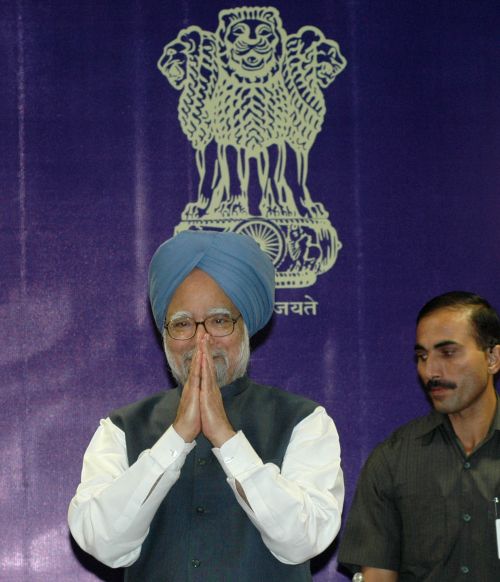
'The man who decided that a multi-lingual Hyderabad should remain would not have been surprised that Telangana and Seemandhra could not live together as a united state.'
'But there was no question of the centre not holding in the Sardar's day. The Congress had accepted the principle of linguistic division in 1920, but Vallabhbhai Patel's grip on the party was so complete that nobody in the Congress questioned his decisions.'
'Compare that to what is happening in Andhra Pradesh now,' points our T V R Shenoy.
'Things fall apart; the centre cannot hold...
W B Yeats' often quoted words seem to strike home with greater intensity, especially after the Congress's decision to concede a new state of Telangana are leading some to describe it as a deliberate unraveling of Sardar Patel's work.
Is the gloom justified?
I am not taking sides. I have friends and acquaintances both from Telangana and from Seemandhra, they tell me differing versions, and without a knowledge of Telugu there is no way for outsiders to grasp the ground reality. But I do believe that some of the breastbeating is unjustified.
The map of India was very different when I came of school-going age, but that was in the last days of the British Raj, and thus hardly relevant. But it is interesting to compare the map of today -- Telangana and all -- with the Union wrought by the Sardar.
Vallabhbhai Patel was not a fan of linguistic states, but nor did he have any preference for either small or large states.
All that he cared about when welding the jigsaw puzzle that he inherited was whether states were 'viable' -- by which he meant if they possessed enough administrative and financial resources to stand on their own, or if they would be a drain on the resources of the Union government, and if they also had a shared sense of history and culture to hang together.
...

The Sardar, always aided by his right hand man V P Menon, decided on a four-runged structure to administer India.
The 'Group A' states consisted of the former British provinces, which in Sardar Patel's opinion, were most advanced. These, in alphabetical order, were Assam, Bihar, Bombay, Madhya Pradesh, Madras, Orissa, Punjab, Uttar Pradesh, and West Bengal.
The 'Group B' states consisted of old princely states, merged or standing alone, that had reached a level close to 'Group A'. These were Hyderabad, Madhya Bharat, Mysore, PEPSU (the Patiala and East Punjab States Union), Rajasthan, Saurashtra, and my own Travancore-Cochin.
'Group C' states were akin to the Union Territories of today. These were Ajmer, Bhopal, Bilaspur, Coorg, Delhi, Himachal Pradesh, Kutch, Manipur, Tripura, and Vindhya Pradesh.
The Andaman & Nicobar Islands were in glorious isolation in the 'Group D' category.
Bear in mind that Sikkim, Pondicherry, and Goa (as also Daman-Diu and Dadra-Nagar Haveli) were not part of the Union of India back then. That would have added several more states to the list, probably in 'Group C' or even 'Group D'.
Keep in mind too that the map differed greatly even when the names may be familiar. Cape Comorin -- it had not yet reverted to 'Kanyakumari' -- was part of Travancore-Cochin.
Bihar stretched eastward so that it touched West Pakistan (now Bangladesh), which meant that Darjeeling was cut off from the plains of Bengal proper.
Himachal Pradesh existed in several parts as did PEPSU, both states divided by Punjab (whose capital was Simla).
The capital of Madhya Pradesh was Nagpur (currently in Maharashtra), and that of Assam was the lovely town of Shillong (now in Meghalaya).
The Sardar, as noted above, was no fan of linguistic states. He had deliberately kept several of them, including Assam, Bombay, Madhya Pradesh, and the giant province of Madras.
In the first general election, then as now, Uttar Pradesh had the largest number of constituencies, 69, but Madras was close behind with 62.
He also refused to integrate Madhya Bharat or Vindhya Pradesh into Madhya Pradesh, kept Saurashtra and Kutch out of Bombay, and left Ajmer standing by itself in the heart of Rajasthan.
...

Sardar Patel's chosen map of India, to put it briefly, would have given nightmares to those weeping over the (potential) division of Andhra Pradesh.
The man who decided that a multi-lingual Hyderabad should remain would not have been surprised that Telangana and Seemandhra could not live together as a united state.
But there was no question of the centre not holding in the Sardar's day. The Congress had accepted the principle of linguistic division as far back as 1920, but Vallabhbhai Patel's grip on the party organisation was so complete and discipline maintained so thoroughly that nobody in the Congress questioned his decisions.
Compare that to what is happening in Andhra Pradesh just now. Partymen from Telangana are unhappy over the idea of making the city of Hyderabad either a Union Territory or the joint capital.
Partymen from Seemandhra are voluble over the decision to split Andhra Pradesh.
It does not matter what the prime minister says or what the Congress president says; everyone in the Congress is bent on looking after their own immediate electoral interest.
Is there a case for a united Andhra Pradesh? Possibly.
Is there a case for a separate Telangana? Possibly.
Is there a case for making Hyderabad the capital of Telangana alone, or of both states, perhaps converting the city into a Union Territory? Possibly.
The point is that the Congress has no coherent vision. And if the party is itself so bitterly divided it certainly cannot convince the people at large about the truth of its beliefs.
...

But the Telangana-Seemandhra divide is merely another manifestation of the confusion within the Congress, of things falling apart.
Stepping away from Andhra Pradesh, take a look at what is happening in Kerala.
The local unit is bitterly divided between the so-called 'I Group' and the 'A Group', divisions that date back to the rivalry between K Karunakaran (who supported Indira Gandhi) and A K Antony (who had left Indira Gandhi after the Emergency).
K Karunakaran died in 2010 and India's defence minister is no longer the commanding voice in the 'A Group,' but that split continues to poison the party.
Oomen Chandy is associated in public perception with the 'A Group', which automatically makes him an enemy in the eyes of the 'I Group'.
I won't bore you with the details of the ongoing Solar Panel Scam, but the men running down the sitting Congress chief minister are not just from the CPI-M, but also from his own party's 'I Group'.
The Congress 'high command' has tried to command its nominal followers in Kerala to follow party discipline, but neither the 'A Group' and certainly not the 'I Group' appear to be in any mood to listen.
The writ of Delhi simply does not run in Thiruvananthapuram.
Nor apparently does it run literally across the border of Delhi, judging by the ramifications of the Durga Shakti Nagpal case.
The ruling Samajwadi Party is, in the public perception, hounding an honest IAS officer, but the Government of India is wringing its hands helplessly.
Matters have reached the point where Ram Gopal Yadav, speaking for the Samajwadi Party, mockingly announced that the Union government was free to withdraw all IAS officers from Uttar Pradesh.
When you think of the phrase 'the centre cannot hold,' it does not just mean the Congress leadership's weakening grip over its party units, but also the utter lack of respect for the Congress-led Union government's writ.
When I look back at the map of India as it was in my own schooldays I am none too worried about the creation of a Telangana. Although there really should have been a proper debate, not just a hasty meeting in the Congress headquarters.
But if matters are so dire that a state government can mock the Government of India as the Akhilesh Yadav ministry is doing, can you blame Beijing, Islamabad, and Colombo for concluding that New Delhi is weak and vacillating?
Keep in mind that W B Yeats sought to explain just why 'things fall apart.' It is because: 'The best lack all conviction, while the worst Are full of passionate intensity.'
Let us hope that the Independence Day of 2014 takes place in circumstances less miserable than the Independence Day of 2013.
You can read Mr T V R Shenoy's earlier columns here.